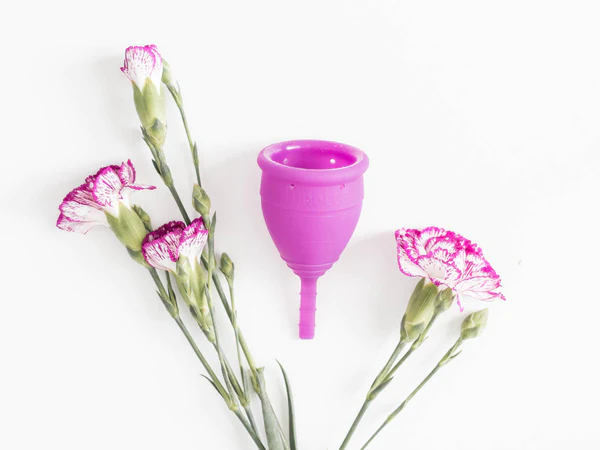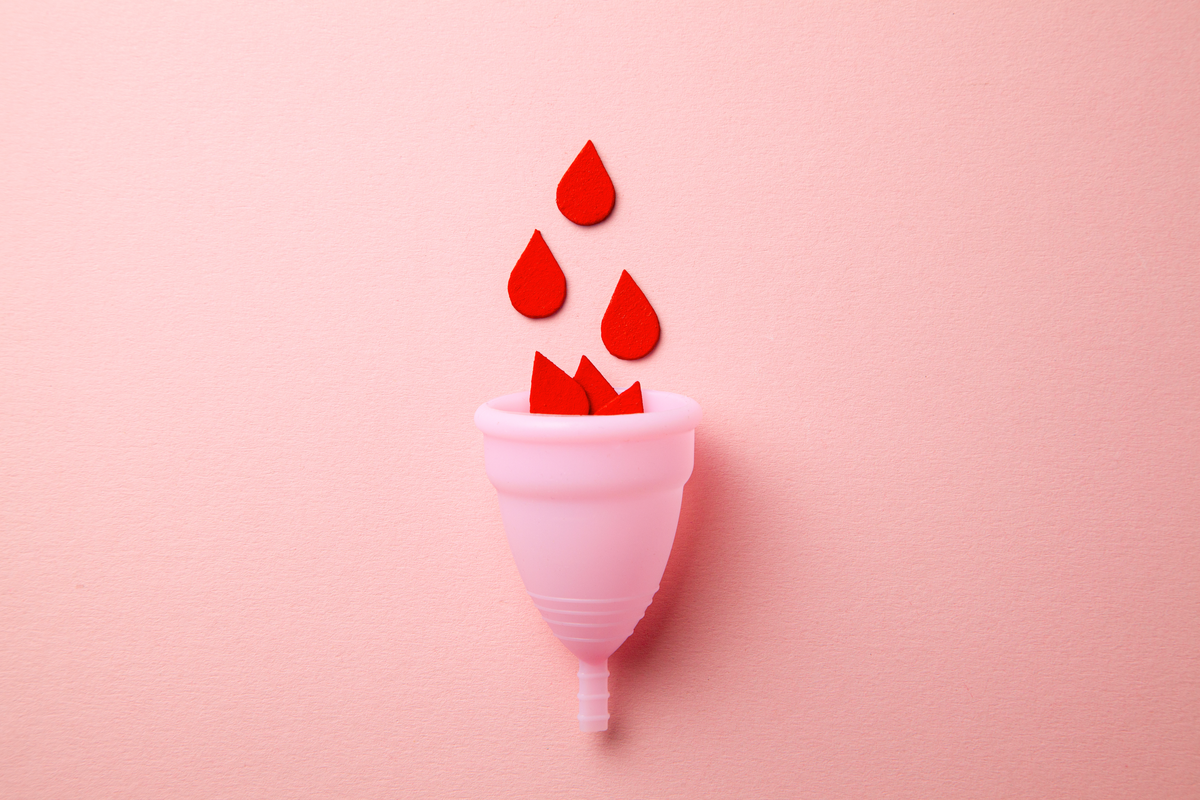My Experience With Menstrual Cups: An Honest Review
I have been using menstrual cups for a year and a half now. I started when I was 18. Menstrual cups can seem very intimidating (for good reason) and everything about them may feel too complicated. There is a massive gap in information surrounding them as their popularity in the Indian menstrual care market is still blooming. If you’ve been going back and forth on the idea of trying one yourself, this article contains my honest experience with menstrual cups – the good, the bad, and the ugly.
THE GOOD
Sustainability
My primary motivation for opting for cups was the sheer amount of plastic generated by pads and tampons. Majority of pads and tampons out there contain a great deal of it, most of which ends up in landfills. A menstruator uses up to 15 thousand pads and tampons over a lifetime and there are a lot of menstruators on the planet, to put it lightly. The onus to save the earth doesn’t, and shouldn’t, lie on menstruators in this regard but if you do want to switch to an eco-friendly product, menstrual cups are a great option. One cup will last you for 5-10 years!
Affordability
Menstrual cups are a one-time investment. I haven’t spent a single coin in a year! They might seem costly at first (one cup costs around Rs. 300-1000) but if you do the math, you’ll realise you’re saving a lot more money when compared to the quarterly sanitary pad shopping spree.
Less frequent changes
On my heaviest days, my cup lasts me for 10 hours and a full 12 hours during the rest. I’m not a heavy bleeder but it is undeniable that cups hold more blood (25 ml on average) than a pad (a meagre 5 ml). You can also wear them for up to 12 hours without worrying about infection or TSS (toxic shock syndrome). Moreover, believe it or not, the amount of people who have reported that periods shortened in length or became lighter after switching cups is incredible! (There are no scientific studies on this, however.)
Less irritation/dryness
Memories of sweaty, blood-soaked pads clinging to my buttcheeks (that was graphic, sorry) still make me shiver. On the other hand, do you know what it feels like when I’m wearing a cup? Nothing. N-O-T-H-I-N-G. Another massive realisation I had was how dry pads made my vagina/vulva feel. The same goes for tampons. They not only absorb the blood but also the vag juices (for the lack of a better term) essential for keeping the vagina healthy. This problem completely dissolved when I switched to cups. Another added benefit is that you can pop it in if you are expecting your period. Bye-bye stained undies!
Less odour
Recall that fishy smell emanating from bloody pads? Menstrual blood starts smelling when exposed to air. In the case of cups, that rarely happens because they form an air-tight seal. So kiss that smell goodbye.
Sex Ed 2.0
I cannot emphasise enough how much I learnt about my own body while searching for the cup that was best suited to me and learning how to manoeuvre it. The process of inserting/removing cups also made me much more familiar with myself – my vagina, especially. It was pretty embarrassing how little I knew before. For instance, I didn’t know that the cervix moved up and down throughout the cycle, what it looked like or what it felt like.
Finding the right fit
I spent hours and hours watching YouTube reviews of various menstrual cups and exploring a tonne of different websites. There are quite a few things to take into account while purchasing the right brand/size. Most sizes are distinguished basis one’s age (basically indicative of their sexual experience *eye roll*). This is misleading. You need to know the height of your cervix, the girth of your vagina, and the strength of your pelvic muscles, among other things. Even after this, you might get it wrong. I had to experiment with 2-3 different cups before I found my “goldilocks”. This definitely took up a lot of time but now I know every nook and cranny of my vagina. I call that even.
The learning curve
This is perhaps the biggest con of menstrual cups. It took me a while (a few cycles, at least) to become a pro. There were a lot of tasks to be mastered – insertion, removal, the ideal fold, setting up a routine, proper cleaning. But trust me, it is all worth it in the end. The first time I tried to insert a cup, I didn’t succeed. The second time I was convinced it wasn’t gonna happen – but it did! My first time removing a cup I almost collapsed on the bathroom floor (figuratively) and I would be lying if I told you that it didn’t hurt – because unlike when you insert it in practically origami form, you can’t fold it much while taking out. But now it only takes me 3-4 minutes at the most. I could even do it in my sleep. Huge thanks to my friends at Put A Cup In It, who were a massive help.
Cleaning
Admittedly, I found cleaning cups to be a bit of a chore. A bleeding vagina can be a home-sweet-home for germs. Every time I touched my cup, I made sure that my hands were completely clean. Ideally, you should rinse the cup with water every time you reinsert it after dumping the blood (basically twice a day). This can be challenging if you are changing in a public restroom (you can use wipes or tissues). Cups also require sterilising after every cycle. That sounds intense but it’s basically just boiling it in water for 3-5 minutes. Although, this might be inconvenient for those who share a kitchen with friends/family and lack privacy. Especially with the stigma surrounding menstrual blood, the idea of making “cup soup” in a pan on the stove might not go down well with many elders.
They suck
No, literally. The mechanism utilised by menstrual cups is that they create a vacuum seal which is what makes them so good at preventing leakage. The weight of the blood helps balance out the pressure. But on the latter days of my period, I find using cups hard because the extra pressure makes my vagina ache (kind of). I use period underwear instead. For similar reasons, many people find it slightly harder to break the seal when removing their cup during lighter flow days.
THE UGLY
(All vulvas are beautiful, and so is menstruation – never forget)
Peeing and pooping with a cup
You can do both – theoretically. When I have my cup in, I have to pee more frequently because the cup adds to the bladder pressure. On top of that, my cup slightly blocks my urethra (pee tube) which makes peeing a long affair. Don’t worry, it’s not as bad as it sounds. Similar logic applies to pooping. Although, I’d like to mention that many people I know simply cannot poop with a cup in.
The Blood
With menstrual cups, you have to get down and dirty with your blood. You’re forced to confront it in all its slimy, clotty, scarlet glory. This can be a very subjective experience. A friend of mine loves it because it makes her feel like a witch (to each their own, right?). Personally, I find it to be affirming and almost poetic. But for those who dislike seeing or touching blood, it can be understandably difficult. In the case of trans/non-binary people who experience gender dysphoria, dealing with menstrual blood up and close might be triggering.
Virginity fraud
Those who do not have the autonomy of choosing a menstrual product of their liking may have a hard time convincing their guardian to let them use a menstrual cup. I was scared to discuss it with my mother, thankfully, she was on board. For those wondering, menstrual cups do not interfere with “virginity” (which is nothing more than a misogynistic construct, to begin with) nor do they affect the elasticity of the vagina.
CONCLUSION
I have laid everything out and the bottom line is – I still use menstrual cups and will continue to do so for a very long time. I adore them! Honestly, I no longer dread the bleeding aspect of getting my period. So if you’ve been waiting for a sign to take this leap, this is it; and if you’re still on the fence – this site has everything you need to know. At the very least, menstrual cups are definitely worth a try.
P.S. – No, they won’t get lost inside you. I promise.
Cover Image: DepositPhotos
Author





5 thoughts on “My Experience With Menstrual Cups: An Honest Review”
Menstrual cups are one of the more popular alternatives to disposable pads and tampons. They’re not just a new way to deal with your monthly flow—they’re also healthier for your body, too.
Useful post
very useful blog
Thank you for the insightful piece on Best Menstrual Cups. Your comprehensive information about the hygiene and benefits of menstrual cups is highly appreciated. I particularly liked the mention of Smart Hygeia, a company committed to providing top-quality menstrual cups in India. It’s great to see recognition for companies prioritizing women’s needs and hygiene. Your article was truly valuable. Thanks!
I love how you’ve expressed an unbiased opinion and considered so many perspectives while laying down your personal experience.